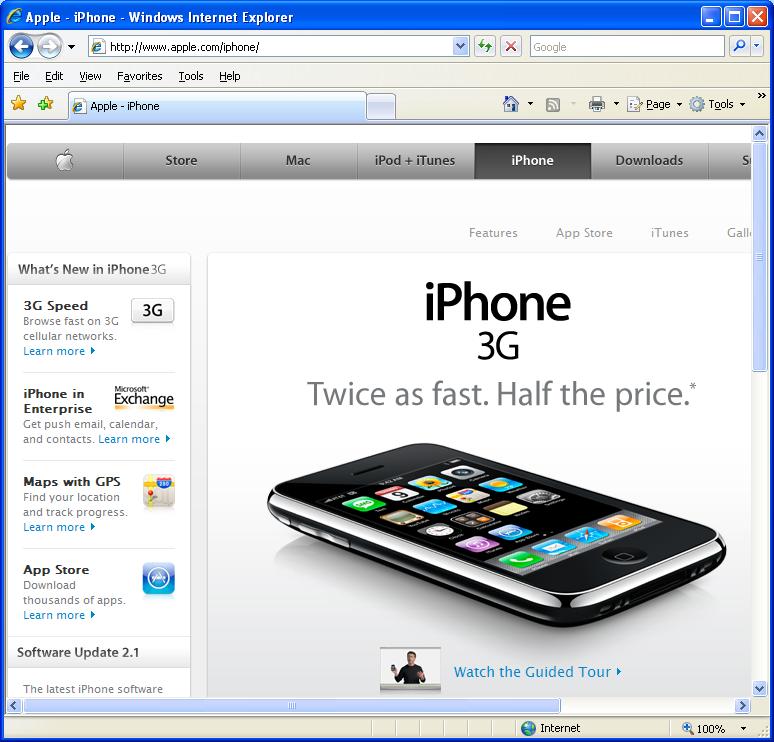
The Storm: Still a text-centric device, but with an increased fun factor Taka
The new touchscreen BlackBerry Storm looks a little like an iPhone and behaves a bit like one, too. So its release is sure to spark a furious debate over which is better. That's the wrong question. Each is an outstanding product—and distinct, despite a few similar design flourishes. The correct question is, which is right for you?
Although the Storm was clearly inspired by Apple's (AAPL) success with the iPhone, the two phones were conceived with different goals in mind. Research In Motion (RIMM) has removed its signature physical keyboard to make room for a 3½-inch display, but it didn't compromise the BlackBerry mission: The Storm is first and foremost a text-centric device built around RIM's celebrated e-mail services. This makes it the hands-down winner for messaging tasks, particularly if you work for an organization that uses the BlackBerry Enterprise Server to relay corporate mail.
The Storm also won't send you scrambling for a midday recharge as the iPhone often does. It has more than enough power to get through a long, busy workday. And unlike the iPhone, the battery is easy to remove, so even if you manage to deplete the charge, you can always pop in a spare.
On the other hand, if messaging on your smartphone takes a back seat to Web browsing, social networking, games, and entertainment, you will be happier with an iPhone. Unlike all-business BlackBerrys of years past, the Storm and other recent models try to be a bit more entertaining. And the Storm browser certainly takes good advantage of that big display, which, like the iPhone's screen, automatically changes orientation from vertical to horizontal as you rotate the phone.
But the Storm still can't hold a candle to the iPhone in terms of sheer fun. The credit for that goes to the iTunes App Store, with its astonishing range of programs—to name just two, MotionX Poker, in which virtual dice roll when you shake the handset, and Shazam, which can identify music you hear on the radio by checking the sound against a database. Still, the Storm offers one key application that Apple, for reasons it has never made clear, has banned from the iPhone: turn-by-turn driving instructions from VZ Navigator.
Overall, in terms of hardware, I'd say the two phones are equal. The original iPhone set a new standard for touchscreen keyboards, but the Storm has it beat. The main difference is that a firm press on the Storm screen triggers a physical switch beneath the glass that both enters the letter you typed and produces a click that greatly improves the accuracy of typing. Hold the phone horizontally and you get a three-row keyboard similar to that on the BlackBerry Curve or the new Bold. Turn it vertically and it switches to the SureType variety, with two letters sharing most keys, just like on the BlackBerry Pearl. In either mode, software figures out what you are trying to type.
Having used BlackBerrys for years, I found the touch keyboard took some getting used to. Try it yourself at your local Verizon shop: Switch back and forth between a BlackBerry 8830 or a Curve and the Storm, and you'll see why most people still prefer keys. But once you get used to the Storm's big screen, you'll forget the minor inconvenience. Virtual or real, BlackBerry's keyboards beat the iPhone in data entry.
Comparing networks is more difficult. First of all, the Storm doesn't do Wi-Fi, a deal-breaker for some people. Secondly, it runs only on Verizon, while iPhones are confined to AT&T (T). These networks use different technologies with roughly equal performance, so it really comes down to who offers the best service wherever you are planning to use the phone most. In tests of both networks in the Washington (D.C.) area and in Michigan, each got about the same high-speed coverage.
There are no major financial considerations in choosing between the Storm and the iPhone: Pricing and service plans are similar. As of Nov. 21 the Storm is available in the U.S. for $200 after rebate with a two-year contract. Telus offers the Storm in Canada and Vodafone (VOD) in Europe. Like the iPhone—and unlike most Verizon handsets—the Storm can be used on fast, 3G networks worldwide. A global data plan costs $65 above a voice plan; unlimited domestic-only data service is $50.
What's my choice? I'm an e-mail guy, working in an environment that supports BlackBerry but not corporate mail on an iPhone, so it's a no-brainer. But to get the best of both worlds, I also have an iPod touch, which isn't a phone but runs most of those cool iPhone programs.
'Business' 카테고리의 다른 글
| A Market-Oriented Economic Team (0) | 2008.11.26 |
|---|---|
| Obama Goes After Farm Subsidies (0) | 2008.11.26 |
| Facebook wins $873M judgment against spammer (0) | 2008.11.25 |
| 'Twilight' sucks up $70.6M in box office debut (0) | 2008.11.25 |
| Wall Street Cheer CitiGroup Bailout (0) | 2008.11.25 |

 del.icio.us
del.icio.us Digg It!
Digg It! yahoo
yahoo Facebook
Facebook rss
rss






Comment On This Story